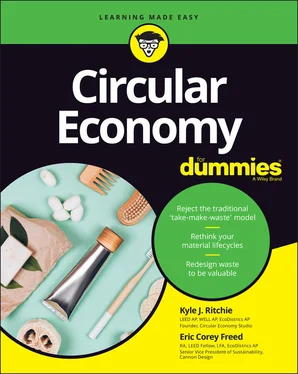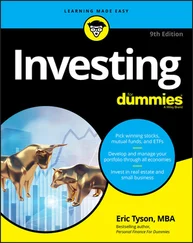Share instead of own, with a growing dependence on sharing services for items such as cars, bikes, tools, and more
 Given the increasing numbers of consumers who are taking wellness issues seriously, it's clear that your company is facing a smarter and more informed customer than ever before. This is the start of the behavioral and mental shift that is needed to transition to a full circular economy. There’s clearly an audience waiting for circular solutions.
Given the increasing numbers of consumers who are taking wellness issues seriously, it's clear that your company is facing a smarter and more informed customer than ever before. This is the start of the behavioral and mental shift that is needed to transition to a full circular economy. There’s clearly an audience waiting for circular solutions.
The Drive to Be in Compliance
Business compliance refers to how a company complies with the laws, regulations, and policies that govern its business. These compliance requirements vary from industry to industry and from location to location. Some industries, such as the chemical industry, are highly regulated because of their potential health risks. Other industries, such as the automotive industry, are highly regulated because of their potential safety risks. Lastly, still other industries, such as the financial industry, are highly regulated because of their potential fraud risks.
Companies with high regulatory requirements tend to have entire teams and departments focused on staying within compliance. Such regulations are enforced to protect the safety of the general public.
Compliance represents an important but expensive aspect of business operations. It sometimes takes a lot of money to stay within compliance, but companies pay up because they don’t want to run afoul of the law. The thing is, companies often assume that the cost of compliance is tied to the cost of doing business, but they rarely step back and question whether there was a better way to avoid the need for this compliance entirely.
For example, a company working with petroleum-based chemicals is highly regulated and needs to remain in compliance. If its leaders were to embrace circular economy principles, they could explore the use of plant-based chemicals that are not regulated.
Note: After every crisis, companies often face a flood of new regulatory compliances to deal with. After the great financial crash of 1929, new regulations and compliance requirements were instituted. After the great financial crisis of 2008, even more financial regulations and compliance requirements were put in place.
 In a warming and more crowded world, expect that more regulations will come around, targeting waste and carbon emissions. Transitioning to a circular model can put your company ahead of the game, where you’re in compliance before any regulation of policies requires you to make a sudden change. It’s much better to make the changes now, at your own pace, than to be forced to make them quickly because of some pending legislation that's about to go into effect. Five hundred major organizations have seen the writing on the wall and have publicly signed on to the New Plastics Economy Global Commitment (
In a warming and more crowded world, expect that more regulations will come around, targeting waste and carbon emissions. Transitioning to a circular model can put your company ahead of the game, where you’re in compliance before any regulation of policies requires you to make a sudden change. It’s much better to make the changes now, at your own pace, than to be forced to make them quickly because of some pending legislation that's about to go into effect. Five hundred major organizations have seen the writing on the wall and have publicly signed on to the New Plastics Economy Global Commitment ( www.newplasticseconomy.org ), pledging to eliminate unnecessary plastic by using design and innovation.
Environmental, social, and corporate governance
E nvironmental, s ocial, and corporate g overnance (ESG) refers to a group of standards used by companies to monitor, track, and evaluate their performance in relation to their impact on the environment, society, and equity. They’re also used by socially conscious investors to evaluate and track their investments.
The simple idea behind ESG standards is that a business should be measured by more than just its financial performance. Basic business decisions made for financial reasons alone ignore how that company performs in relation to society as a whole.
Investors have taken notice. Companies embracing ESG standards often outperform their traditional competitors. In fact, those companies using a circular model typically deliver even better returns — and with lower risk.
According to Deutsche Bank, 95 percent of assets under its management (around $130 trillion) will be governed by ESG compliance standards by 2030. These compliance standards are a form of corporate transparency, where companies publicly disclose their progress toward meeting these environmental targets.
 The benefit of ESG standards is that they provide a standardized approach to metrics and terms so that everyone can compare companies equally and hold them accountable for their progress toward their ESG commitments.
The benefit of ESG standards is that they provide a standardized approach to metrics and terms so that everyone can compare companies equally and hold them accountable for their progress toward their ESG commitments.
This list describes some ESG standards (and investment funds) related to the circular economy:
BlackRock ( www.blackrock.com ): BlackRock has launched the BGF Circular Economy Fund, which aims to drive investment in businesses already benefiting from, or contributing to, the transition to a circular economy.
European Commission ( https://ec.europa.eu ): The commission has created the EU Taxonomy for Sustainable Activities to create the first green list of sustainable economic indicators.
Circulytics Indicators: Developed by the Ellen MacArthur Foundation ( www.ellenmacarthurfoundation.org ) in coordination with dozens of partners, these indicators are part of a comprehensive circularity measurement tool for companies.
Material Circularity Indicators (MCIs): Developed by the Ellen MacArthur Foundation and Granta Design (now Ansys Granta, www.ansys.com/products/materials ), this tool lets companies identify additional circular value from their products and materials as well as mitigate risks from material price volatility.
Circular Transition Indicators: Developed by the World Business Council for Sustainable Development ( www.wbcsd.org ), this framework can be applied to all industries and companies to help them transition to a circular economy.
Corporate social responsibility (CSR)
ESG is often lumped together with another movement, called corporate social responsibility (CSR). Though they’re related, CSR should be credited as the true trailblazer here, by coming up with the idea that a company should be a good environmental steward of the environment. Without CSR, there would be no ESG, but the two are often confused as being interchangeable.
In reality, ESG consists of a series of clear guidelines and standards for companies to follow to track their CSR goals and targets and ensure that they’re in regulatory compliance.
 CSR began as more consumers started showing their awareness of a company’s social responsibility and wanting to support that company.
CSR began as more consumers started showing their awareness of a company’s social responsibility and wanting to support that company.
Eventually, every company will be held responsible for the climate impacts they produce. Many countries have been debating the use of a carbon tax to encourage companies to curb their emissions.
A carbon tax is a fee ($ per ton emitted) on the carbon content of fossil fuels, and those taxes are used to pay for carbon capturing activities (such as planting forests). More than ten carbon pricing bills are in the congressional pipeline in the United States alone, with more expected.
For companies engaging in any heavily polluting industries, such as energy intensive mining or fossil fuel extraction, a carbon tax is a huge potential liability. This is why a large coal company like Koch Industries reportedly spent $11 million in 2019 lobbying Congress to block any legislation that would put a price on carbon emissions.
Читать дальше

 Given the increasing numbers of consumers who are taking wellness issues seriously, it's clear that your company is facing a smarter and more informed customer than ever before. This is the start of the behavioral and mental shift that is needed to transition to a full circular economy. There’s clearly an audience waiting for circular solutions.
Given the increasing numbers of consumers who are taking wellness issues seriously, it's clear that your company is facing a smarter and more informed customer than ever before. This is the start of the behavioral and mental shift that is needed to transition to a full circular economy. There’s clearly an audience waiting for circular solutions.










